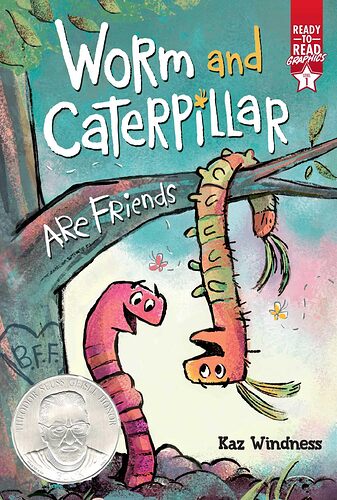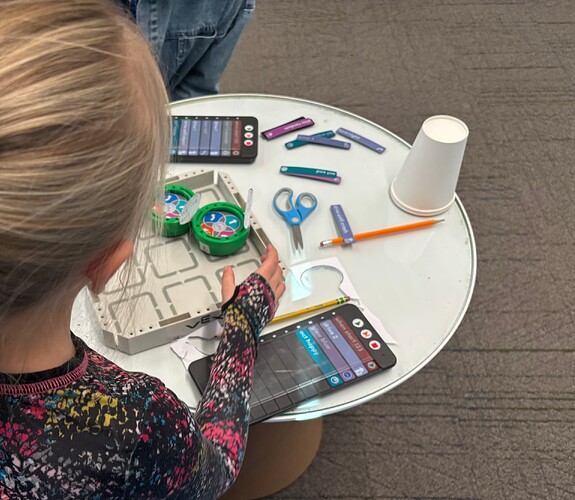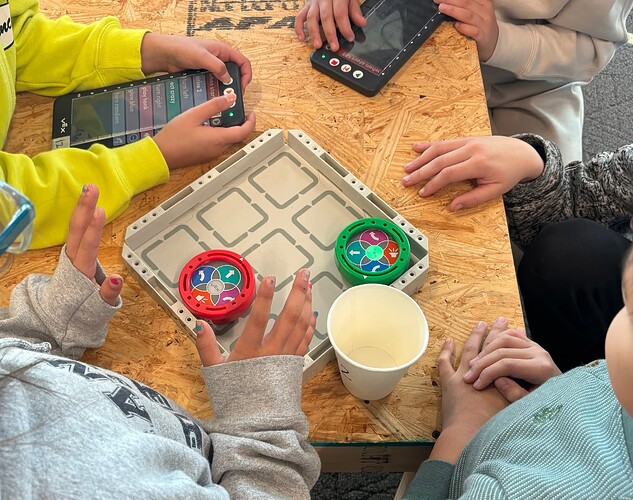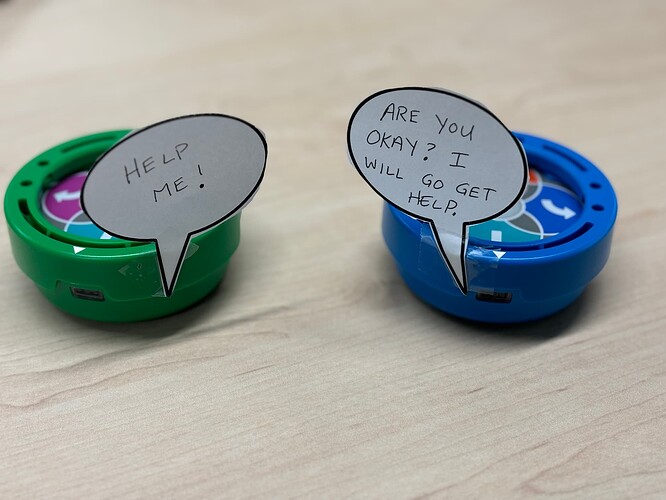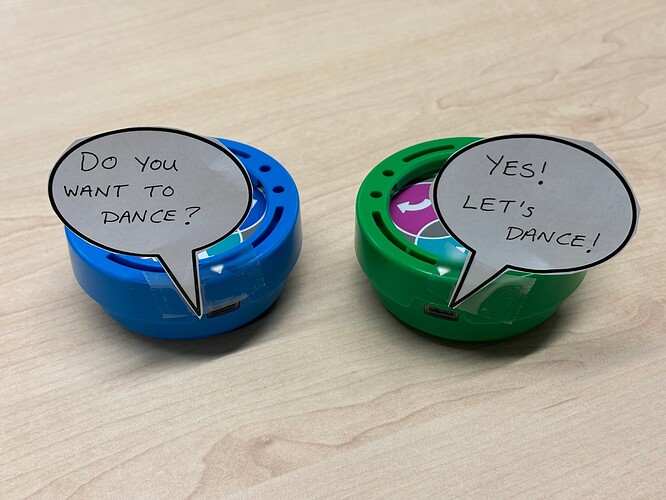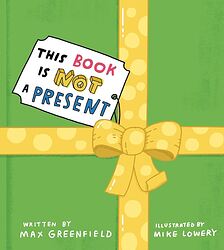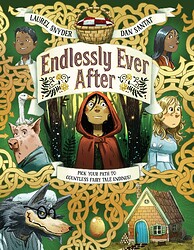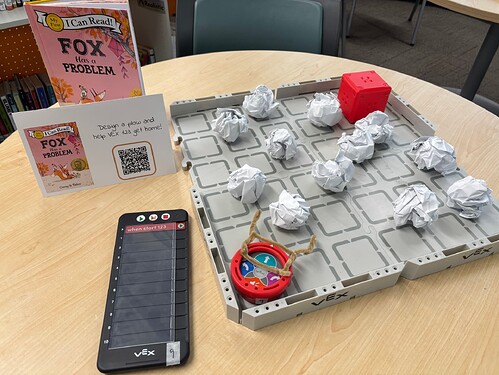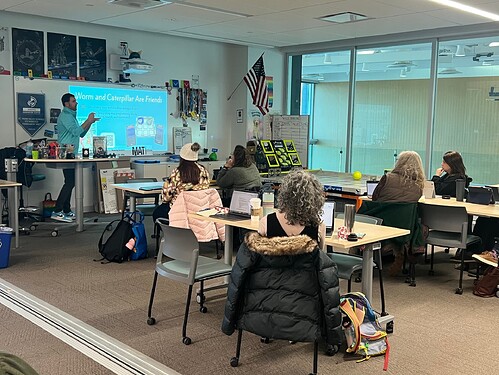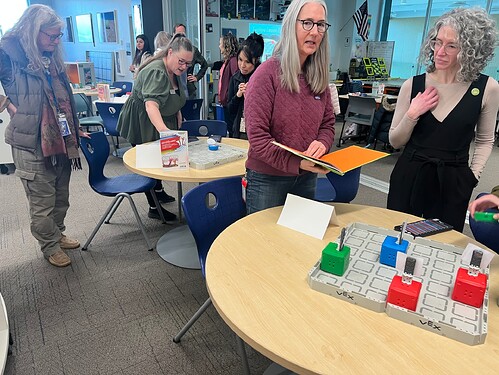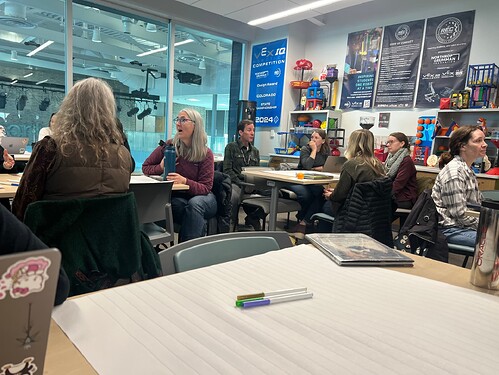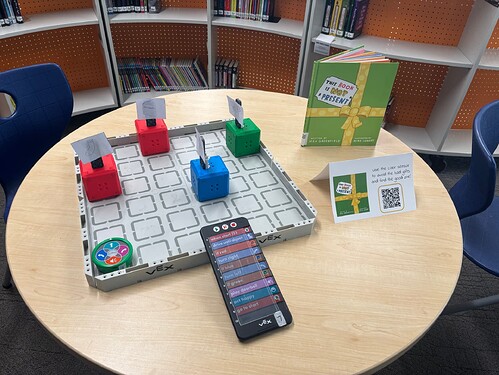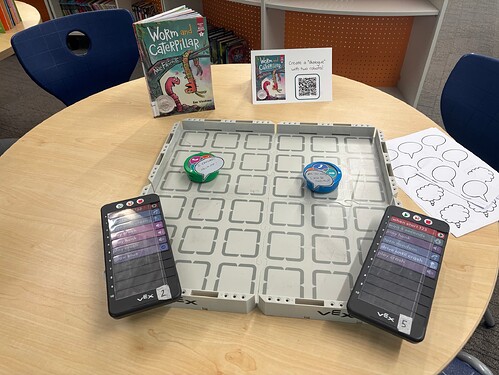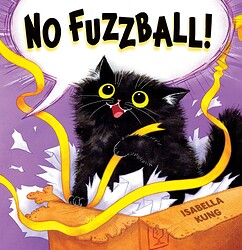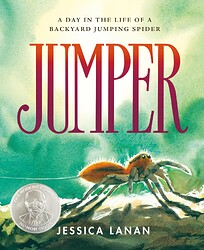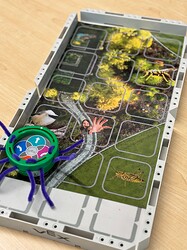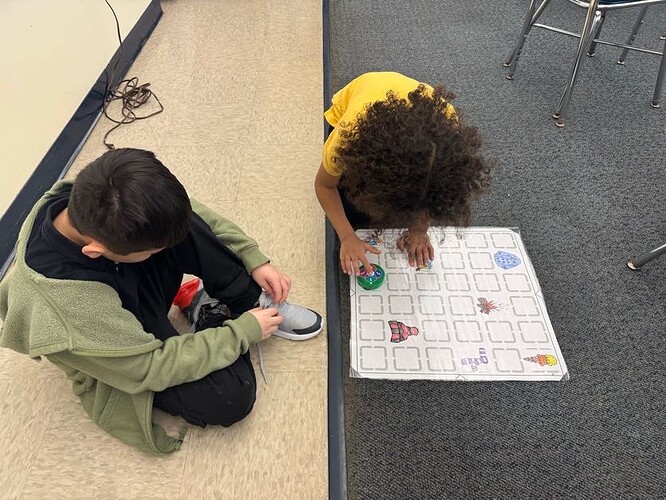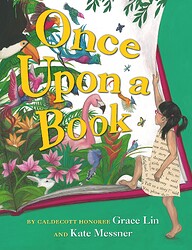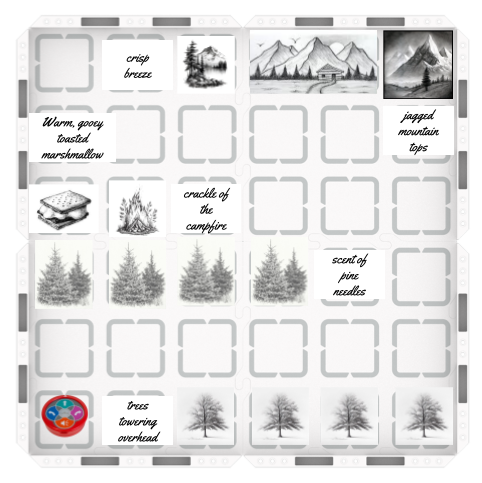We are introducing the CCBA (Colorado Children’s Book Award) Nominees to our students in the library. I will be creating lessons to pair with many of the books on this year’s list. What are everyone’s favorite ways to integrate literacy and the VEX 123 robots? I am excited to share what I come up with!
We started our first lesson this week to introduce the CCBA nominees! The students used the coder cards to navigate to the book that looked most interesting. They used the VEX magnetic beam to collect the books and return them to the starting position. This was a fun way to introduce all of the books and use the coder cards for the first time! Check out the links below for my lesson slide deck and steps to create the magnetic beam mount and book stands.
Intro to the CCBA
Building the Magnetic Beam Mount
Magnetic Book Stands
VEX Magnetic Beam Pair Order Link
I used this for a similar lesson at the end of the year last year to remind students to return their library books!
Worm and Caterpillar Are Friends
LESSON SLIDE DECK
This is a great story about friendship and celebrating differences, but what I REALLY liked about it was the intentional use of dialogue and speech bubbles. My students love checking out graphic novels from the library, however, many of my early readers don’t always know how to navigate the pages. This book focuses on how to read speech bubbles and move through panels in a story.
After the story, students created their own dialogue between two, VEX123 robots! I introduced several new blocks, including sounds, lights, actions, and wait commands. The students had a lot of fun creating their back-and-forth between the two robots, and it gave us a great opportunity to introduce new blocks and a management system for collecting (AND RETURNING!) the coder cards!
This Book is NOT a Present
This is a fun, silly story about a kid who receives a book for a present. Needless to say, he is not impressed and highlights many other options that would be better suited for a present.
I used this book as a jumping-off point to discuss how robots make decisions. First, students brainstormed ideas of things that they felt were NOT presents. Then, they used the “if color” blocks to create a maze to avoid the bad presents and celebrate when they found a good present.
Check out my lesson slide deck! It includes a read-aloud from the author, discussion questions, talking points about conditional statements, and team roles for the students to keep everyone engaged. I also created a worksheet for students to use when drawing their presents.
I used the VEX Cube Kit to create color-based obstacles for the students to mount their present drawings, but anything red, blue, and green could be substituted for this activity.
As an extension, the groups were challenged to find as many possible locations of the presents that would still allow their same program to work.
Using storybooks with VEX 123 is such a creative way to bring robotics into another subject.
When we introduce VEX 123 to students, we recommend starting with:
![]() The Meet Your Robot PDF Book and Teacher’s Guide, which help students get to know the 123 Robot, Coder, and materials in a fun, hands-on way.
The Meet Your Robot PDF Book and Teacher’s Guide, which help students get to know the 123 Robot, Coder, and materials in a fun, hands-on way.
Thank you for sharing these ideas and slide decks @James_Nesbitt
This is such a cool idea! Connecting literacy and 123 is one of my favorite topics of discussion ![]() I think there are just so many amazing opportunities there - as you’ve shown so beautifully!
I think there are just so many amazing opportunities there - as you’ve shown so beautifully!
I think having the robot ‘act out’ or drive to plot points from stories in order is also a fun way to support students’ developing reading comprehension. They can use the Art Ring to create the character from the story, then ‘retell’ the story using the 123 Robot.
I used to do a fun activity where I’d read the first part of a book - and then stop intentionally at a ‘cliffhanger’. Then students would write their own ending and share them with the class. It reminded me of the Choose Your Own Adventure books that I LOVED as a kid. It was also an incredibly imaginative way to get kids eager to write! With 123, you could have them use the robot to “act out” their ending as they tell it. Then after everyone has shared, you read the ACTUAL ending and they compare and contrast and can ‘critique’ the real book compared to their classmates’! Just another idea to add to your growing repertoire @James_Nesbitt!
Speaking of Art Rings… you could have students create their own “Wild Thing”, (your robot could be Max) and then code them to have a Wild Rumpus in a 123 version of Where the Wild Things Are! PLEASE send videos if you try this out ![]()
Great idea! The kids LOVE the “Choose Your Own Adventure” books and they are an excellent way to get them writing creatively through an engaging format. I met with our other district librarians today and one of them suggested the book, Endlessly Ever After by Dan Santat.
This is a fun, choose-your-own-adventure book to check out!
YES!!! I love that book and it brings back so many fond memories of reading it to my own children. I would love to see a “Wild Rumpus” with VEX 123 Wild Things!
Fox Has a Problem
Lesson Slide Deck
This a fast read and a great story for discussing problem-solving and teamwork! For this VEX 123 activity, students are required to create a snow plow for their robot to help Fox clear a path to his home. Each team has an engineer to design the plow and a programmer to plan and code a path. Teams are permitted to join together to have up to three robots clearing a pathway for Fox. This added an additional challenge for the programmers because they needed to collaborate across teams to stay out of each other’s way!
PS… I totally stole this lesson from the “Dragon in the Village” lesson. Instead of pushing out the dragon, they are plowing the snow ![]()
Connecting Literacy and STEM PD
Today, I had the pleasure of hosting a district-wide PD for our school librarians focused on connecting Literacy and STEM. We discussed strategies for connecting ELA standards with CS standards and leveraging the technology as an engaging way to demonstrate learning. Here is my slide deck from the presentation. I am planning to keep this as a fluid document as I continue to build out new literacy/STEM lessons throughout the year. I hope to connect with everyone on this topic at the VEX Educator’s Conference in May!
@James_Nesbitt These are so inspiring! Congratulations on your presentation - it sounds like a great opportunity to engage more teachers in thinking creatively about blending CS into literacy activities. Can’t wait to talk more at the conference!
No Fuzzball by Isabella Kung is a fun story emphasizing the importance of a character’s perspective. Fuzzball thinks she is the queen of her house, but her family has a different view!
Isabella Kung has a great video showing students how to draw her famous character, Fuzzball. The students followed along with her guided drawing, then added details to the background to plan a piece of writing. They used details from the book to extend the story.
After they completed their writing, they used crafting materials to design a setting on the VEX 123. They added a sketch of Fuzzball to the art ring and used the coder cards to act out the story they created.
LESSON SLIDE DECK
Jumper by Jessica Lanan is an incredible example of breathing life into non-fiction. This story follows a backyard, jumping spider and weaves together a web of real facts and an engaging narrative.
After the story, the students had a meaningful conversation about how its environment influenced the traits of a jumping spider.
The students then had to navigate their VEX 123 Spider through a backyard setting to hunt for food and avoid the dangers!
Check out the lesson slide deck for more information and ideas!
These are great ideas @James_Nesbitt! @Desiree_White-Price, @Danielle_McCoy, and @Tina_Dietrich I feel like the three of you could use these with some of your students, and maybe share some of the literacy activities you’ve all done with 123 and GO, to connect robotics to books that students are interested in too.
A first grade classroom just ready Sneezy The Snowman and then used their VEX 123 robots to code to the sequence of the story! This is such a fun and easy winter activity to connect robotics with literacy!
Such a great way to give students another outlet to demonstrate what they learned during the reading lesson! I love how you created your fields. It helps when the groups can spread out to give them more room to work!
Once Upon a Book by Grace Lin and Kate Messner is a fantastical journey of a young girl who escapes a dreary day through the pages of her book. With many nods to Louis Carroll’s Alice in Wonderland, this book describes the many settings the curious Alice discovers along the way.
Our lesson focused on the detailed, setting descriptions and use of literary elements such as similies, personification, and other figurative language.
LESSON SLIDE DECK
After our interactive read-aloud, the students were challenged to use their five senses to create their own setting. They used squares of paper to write and draw a setting for their VEX 123 robots.
Teacher Example:
Students used a graphic organizer to collect their ideas and worked in teams to bring their settings to life. Finally, they programmed their VEX 123 to explore the settings and included emotions and lights to create a tone for the scene.
This was an engaging example of how you can leverage STEM and robotics as tools to demonstrate cross-curricular knowledge.
@Desiree_White-Price @Danielle_McCoy @Tina_Dietrich, I created a VEX 123/GO Literacy Lesson “Super-Doc” for us to use to catch all of these great ideas in one place! Please feel free to share your emails so that I can add you as editors. I can’t wait to see what everyone has been creating for their students!
VEX 123/GO Literacy Lessons Super Doc



